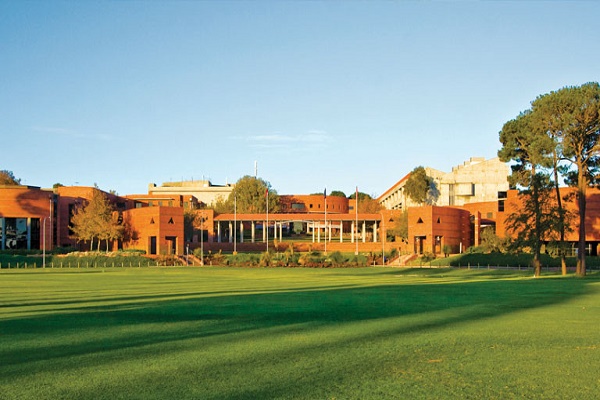Curtin University: Curtin and Chevron join forces on innovative corrosion control project
Corrosion and its potential impacts to major infrastructure is a common and often costly challenge faced by many offshore operators.
Supported by a contribution of more than $2.5 million from Chevron Australia, the team at Curtin will design, build, and operate the Extreme Service Flow Loop facility with the aim to improve corrosion management and maintenance costs, assisting operators to minimise the risk of damage to major infrastructure and the environment.
The funding from Chevron, which has been a partner of the centre for 18 years, will also support a three-year research program after the flow loop is commissioned.
The Extreme Service Flow Loop facility will mimic the flow conditions inside pipelines and other high-flow environments in the oil and gas industry. It will allow the team to measure and then predict corrosion damage by studying the effect of pipelines transporting gas fluids in a controlled environment. The team will be able to specify operating parameters such as flow rate, temperature, pressure, single or multiphase, piping diameter, and a selection of corrosion probes and sensors to simulate real industry operations.
Lead researcher Associate Professor Ahmed Barifcani, from the Curtin Corrosion Centre, said Chevron’s investment would transform corrosion control strategies around the world.
“Western Australia continues to be a leading energy producer, so it is critical to develop local capabilities to assist with maintaining the large-scale plants that operate in our State. This funding will allow our team to manage this ongoing issue locally here in WA, without relying on international facilities for testing,” said Associate Professor Barifcani.
“Corrosion of engineering alloys, which are commonly used for pipelines and pressure valves in the oil and gas industry, is common and costly to maintain and repair. Essentially, we will use the research to both predict and prevent corrosion in pipelines, so they can be repaired to reduce the risk to the environment, while also providing companies with information that can help them build oil and gas pipelines with more confidence in remote and previously inaccessible locations.
“This facility will also assist with better material selection and corrosion management methods, leading to product lifetime extension and, ultimately, moving towards a circular environmentally controlled economy.”
Professor Mariano Iannuzzi, Director of the Curtin Corrosion Centre, welcomed the Chevron Australia collaboration and its positive impacts on industry.
“The team at the Curtin Corrosion Centre looks forward to working together on this project with Chevron Australia, which will result in significant benefits for industries which operate near or offshore, such as Australia’s LNG industry, as well as all large-scale operations that might be affected by corrosion,” Professor Iannuzzi said.
With completion expected in 2023, the Extreme Service Flow Loop will initially focus on the Chevron-operated Gorgon and Wheatstone natural gas facilities in Australia’s North-West, two of the world’s largest natural gas developments.
Chevron Australia Director of Operations Kory Judd said he was pleased to continue to partner with the Curtin Corrosion Centre to support the ongoing development of Western Australia’s world-leading energy industry.
“Chevron has always embraced innovation and implemented technology to solve the energy challenges of today and the future,” Mr Judd said.
“We’re proud to partner with the Curtin Corrosion Centre to build local capabilities and expertise in corrosion management – an important maintenance area for our industry that has the potential to create new jobs and post-graduate research opportunities in Western Australia.”
The Flow Loop concept design was carried out by Ammar Al Helal, Darwin Hartono, Fenny Kho, Yu Long, Christopher Lagat, and Francisco Vouilloz from the Curtin Corrosion Centre.

